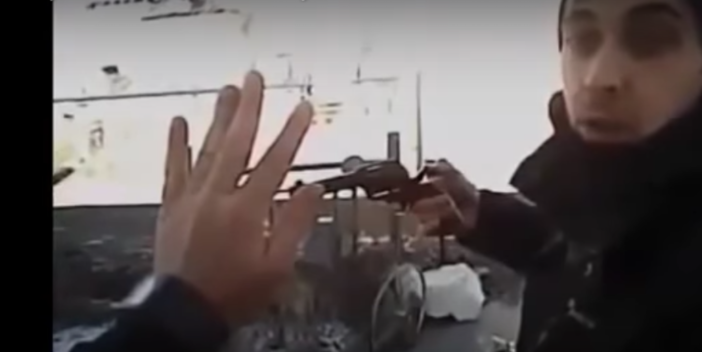There’s a lot of dishonesty today in our political rhetoric. In fact, it seems the truth is a matter of whose version and whose bias the media is catering to. By the way, by “media” I don’t only mean just traditional mainstream news but the especially vitriolic online media as well.
The profession of policing has come under fire for use of deadly force over the last few years. If you were to believe today’s headlines, you would think there are hordes of untrained, uneducated, fascist, jackbooted thugs wearing badges intent on doing citizens harm.
That, of course, could not be further from the truth. But the loud voices create the illusion of majority opinion and adds to an atmosphere of distrust for police agencies all over the country.
Any honest discussion of police use of force must take into account the setting in which today’s police officer has to police. We do, in fact, live in a society where the use of firearms and violence are a very real part of our communities. Police use of force has to take this setting into account, and thoughtful questions have to be asked.
Do police officers get shot and killed?
Yes, they do. There are plenty of people out there who wouldn’t think twice of shooting it out with the police. According to data from the National Law Enforcement Memorial, 514 police officers have been killed by gunfire in the last 10 years. This doesn’t include those who have died as a result of a beating, stabbing, or being purposely hit by a vehicle.
Do police officers get shot and injured?
Yes, they do. This occurs frequently and the numbers are in the hundreds. Some suffer life-changing injuries and are permanently disabled. This, by the way, does not include the number of times police officers get shot at, for which there is no accurate data.
How often do police officers really encounter firearms?
Every day, police officers are responding to calls of armed subjects. In the vast majority of these calls, people are taken into custody without the use of deadly force. This is often due to excellent training and good judgment on the part of the officer. Check any police department evidence room and you will find hundreds of firearms that have been seized.
Do police officers encounter individuals with firearms who shouldn’t have them?
Yes. Convicted felons, parolees, and others wielding guns are an every day occurrence. You have to ask yourself, why do they have guns in their possession? It is understood if you’re a convicted felon in possession of a firearm it is for no good purpose.
Thousands of dangerous convicted felons are arrested every year for possessing firearms. Thankfully, the majority of these arrests take place with no injuries or harm to anyone.
How many guns are there out there?
Estimates are there are more than 300 million firearms in circulation. There are more guns than there are people in the United States. Most, of course, are owned by responsible people. But also in the mix are millions of firearms that have been stolen and unrecovered. So, who has them? Mostly people who shouldn’t have them, including drug dealers, gang members, and a host of other bad guys.
Do police officers really get attacked that often?
While the data is almost certainly incomplete, in 2016 there were a reported 58,627 assaults on police officers resulting in 16,677 injuries. It is a rare officer who has not been injured at least several times in their career taking suspects into custody.
How dangerous can an unarmed person be?
Unarmed does not mean not dangerous. You have to admit, anyone who would fight a uniformed police officer has got to be a special kind of crazy. That being said, every officer brings a gun to a fist fight. If they lose the fight, they potentially lose their gun.
How many people get shot every day?
The CDC reported that in 2015, a total of 12,979 were killed by firearms. This doesn’t include suicides. In addition, on average 76,554 have been shot and injured over the last five years. That’s a lot of shooting going on.
It seems every week police departments are releasing video of officers taking gunfire. That’s the real world that police officers have to face every day.
A recent U.S. Supreme Court ruling reaffirmed that when judging police use of force cases, you have to consider the reasonableness of the officer’s behavior. This has been the law of the land for decades now.
The movement to change the standard to merely necessary use of force ignores reality. It creates a standard where police officers would be judged after the fact rather than on what they have to process in just fractions of a second. It is dishonest. Who defines the term “necessary”? Monday morning quarterbacks and pundits?
Sure, there are rare cases where officers’ reactions are so unreasonable they are criminal. That was evident in the South Carolina shooting of Walter Scott. Former Officer Michael Slager is now serving over 20 years in prison and a large monetary settlement has been reached with the victim’s family. That is definitely a case that needed to heard by a jury and judged according to the evidence presented.
The world is, of course, imperfect. It is policed by ordinary men and women trying to do an extraordinary job with unrealistic expectations from a critical public. No discussion about police use of force can take place without acknowledging the very real risks police officers encounter every day. It is a reality many just can’t or won’t acknowledge.
Joe is a retired captain. He can be reached at jvargas@behindthebadgeoc.com
 Behind the Badge
Behind the Badge



